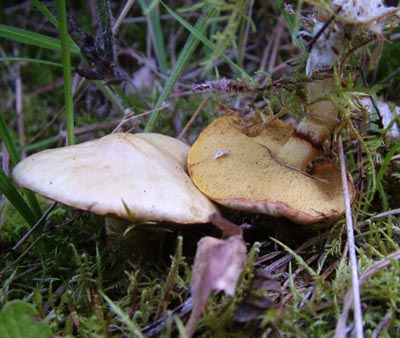Approach to newly planted forestry.
I added Common Polypody to yesterday's spore list.
Bright sunshine.
This is the tunnel of the larva of a moth. It lives inside the leaf and eats a track that gets wider as the larva grows. The track starts at the right edge of the leaf and gradually moves inwards towards the large area in the centre of the leaf. The rule for making the path appears to be "turn right at each barrier, turn left after a time, turn left again after a shorter time, then resume turning right at each barrier".
This is yet another victim of the Entomophthora muscae fungus. I found five specimens, all hoverflies. Most on Devil's-bit Scabious (as here) and one on the seedhead of a Poa (grass). It appears to be locally common here, but is generally under recorded in Ireland.
Note the two cream-coloured halteres just below the legs, at the top of the abdomen. These are vestigial rear wings, and are used to assist with balance when the insect is flying.
Two images of a perfect specimen of 'Slippery Jack' - Suillus luteus. About 10 cm across the cap.
And now two pictures of another Suillus, perhaps flavidus. This specimen has been sent off for expert analysis. If it turns out to be Suillus flavidus, then it would be a very exciting find indeed, since the nearest known distribution is in a small area of Scotland. About 4 cm. across the cap.


On the left we have the seedpods of the Yellow Rattle. The plant is so-called because the seeds rattle around inside the dry pods. And on the right, a flower that is very rarely fully opened - the New Zealand Willowherb. Flower about 5mm. across. I just noticed the red-tipped sepals. Very delicate.
Eagle-eyed readers will see the larval cases of the Rush Moth in the background of the Yellow Rattle picture. Here's a closer view.